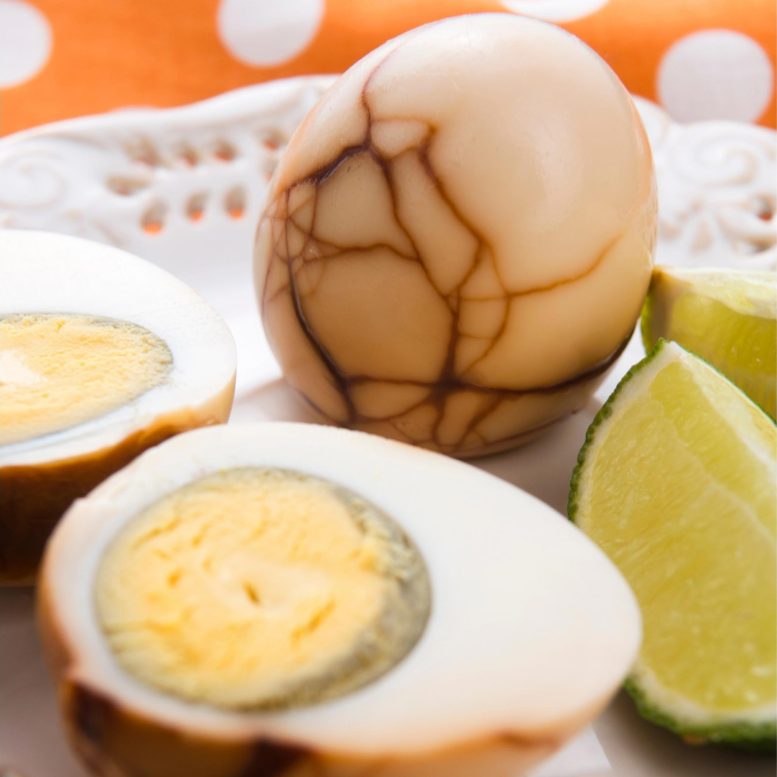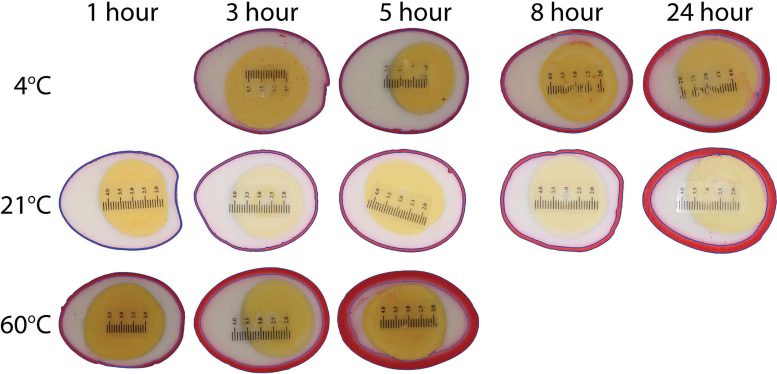
Pickled Eggs
Experiment designed for home or classroom shows how time, temperature affect diffusion.
Marinated, or pickled, eggs are enjoyed by cultures around the world. There are Pennsylvania Dutch red-beet pickled eggs, German-style ones with a heavy dose of mustard, and Asian recipes that use rice vinegar and soy sauce, to name a few.
The basis of any recipe is marinating hard boiled eggs in vinegar or brine, which cures the eggs by sufficiently saturating the egg whites via diffusion. In American Journal of Physics, published on behalf of the American Association of Physics Teachers by AIP Publishing, researchers at the University of Nebraska-Lincoln were inspired to demonstrate how diffusion works in an easy and quantifiable way.
“We wanted to develop an experiment for high school and college STEM (science, technology, engineering, and math) students to show them how diffusion works in a simple visual manner and to ensure the experiment was easy to do at home so kids can learn diffusion on their own,” co-author Carson Emeigh said.

Comparison of dye penetration into the egg whites at different temperatures. Credit: Carson Emeigh, Hyeonggeun Luke Bak, Dilziba Kizghin, and Haipeng Zhang
Driven by thermal energy, diffusion occurs when atoms, molecules, or other particles spread throughout a fluid (air or liquid) over time from the highest concentration point to the lowest. Diffusion is widely studied for myriad applications, from aircraft engines to drug development.
In their experiment, the researchers compared penetration levels of red food dye in the whites of peeled hard-boiled eggs at three different temperatures: refrigerator temperature (40 F or 4 C), room temperature (70 F or 21 C), and in a cool convection oven (140 F or 60 C).
Each egg was taken out of the solution at a predetermined time (one hour, three hours, five hours, eight hours, or 24 hours), sliced in half with an egg slicer, and imaged. A digital camera on a tripod was placed above the light box.
The study demonstrated that at each increasing time interval, the dye diffused deeper into the egg white, with diffusion occurring more rapidly at higher temperatures.
The experiment can be simplified for home or classroom by using a pot or slow cooker instead of a convection oven, and eggs can be prepared in advance, so students can make all the measurements at the same time. Manual measurements of the penetration distance can replace the imaging method. Soy sauce or marinade of students’ choice could be used instead of food dye solution, allowing students to “taste” the differences in diffusion.
Reference: “Marinated eggs: An engaging quantitative demonstration of diffusion” by Carson Emeigh, Hyeonggeun Luke Bak, Dilziba Kizghin, Haipeng Zhang and Sangjin Ryu, 23 March 2022, American Journal of Physics.
DOI: 10.1119/5.0062178









Be the first to comment on "Simple Experiment Using Pickled Eggs to Demonstrate Diffusion"